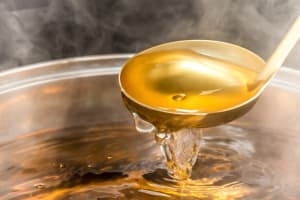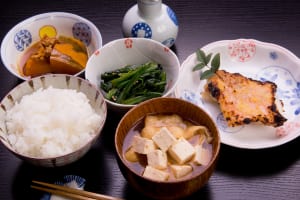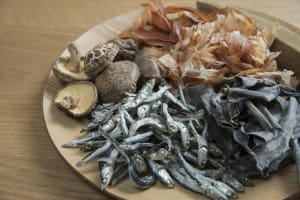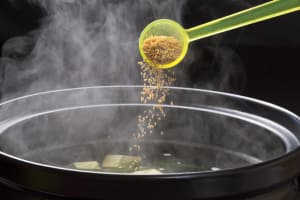
Japanese style cuisine is popular all around the world and there must be quite a few people who look forward to eating the delicious food when traveling to Japan.
What differentiates Japanese style cuisine from others is “umami”. “Umami” is a word used to describe flavor just like sweet, sour, bitter, and salty. In this article, we will define what “umami” is and how to extract it.
The 4 Characteristics of Japanese Style Cuisine

Japanese style cuisine is registered as intangible cultural heritage in 2013 and here are some characteristics of it:
- Respect for diverse and fresh ingredients and their taste
- Nutritional balance that supports healthy diet
- Representation of natural beauty and seasonal transition
- Close connection with annual events
The most notable characteristic out of all that makes Japanese style cuisine so popular is how well nutritionally balanced it is. The most basic menu of Japanese style cuisine is known as “ichiju sansai (一汁三菜) which stands for one soup, three dishes. More specifically; rice, miso soup, side dish, and picked vegetable. The above menu provides balanced source of carbohydrate, protein, and fat.
In addition, by skillfully utilizing “umami”, one can reduce the amount of sodium and animal fat used while balancing the overall nutritional balance.
“Dashi” the Bringer of “Umami”

“Umami” is added using “dashi” which is an umami extract collected by immersing or boiling down the ingredients.
In Japan, the most popular ingredients used to collect dashi are; sea weeds such as kelp, dried fishes such as bonito, and agricultural products such as dried shitake mushroom. Each ingredient has its own unique umami component. For example, kelp contains “glutamic acid”, bonito contains “inosinic acid”, and shitake mushroom contains “gunaylic acid”.
How to Make Flavorful “Dashi”
To begin with, fill a pot with water and place a kelp in it and leave it for around 30 minutes. Then, heat it up and replace the kelp with dried bonito right before it starts boiling. Once it starts boiling, remove from heat, and remove dried bonito from the pot. Now your own dashi is complete!
Umami can be enhanced by mixing several types of umami component. More specifically, it is scientifically proven that mixing kelp’s vegetative umami and dried bonito’s animal umami, just like the example above, synergizes enhancing the umami flavor.
Popular Dashi Stock in Japan

Since extraction of dashi can be time consuming, utilization of commercial dashi stock is quite common in Japan. It can come in tea-bag like bag or just as a granule powder. The most popular medium is granule dashi powder stick because there is no need to boil down or even measure the amount before adding. When making a soup or simmered dish, simply adding dashi can bring out the umami making the dish even more delicious. If you would ever like to make Japanese style cuisine at your house, why not bring back ingredients for dashi or dashi stock back to your home.
If you want to know more about Umami and Dashi, how about taking a Japanese Cooking Class? At YUCa’s Japanese Cooking, you can make the Ramen soup from the scratch!
[Find more about YUCa’s Japanese Cooking](https://www.magical-trip.com/spot/tokyo-yokohama/homemade-ramen-and-gyoza-yuca/a16eb518-9ad6-44ad-b3e5-86ebfd2f1a8b)